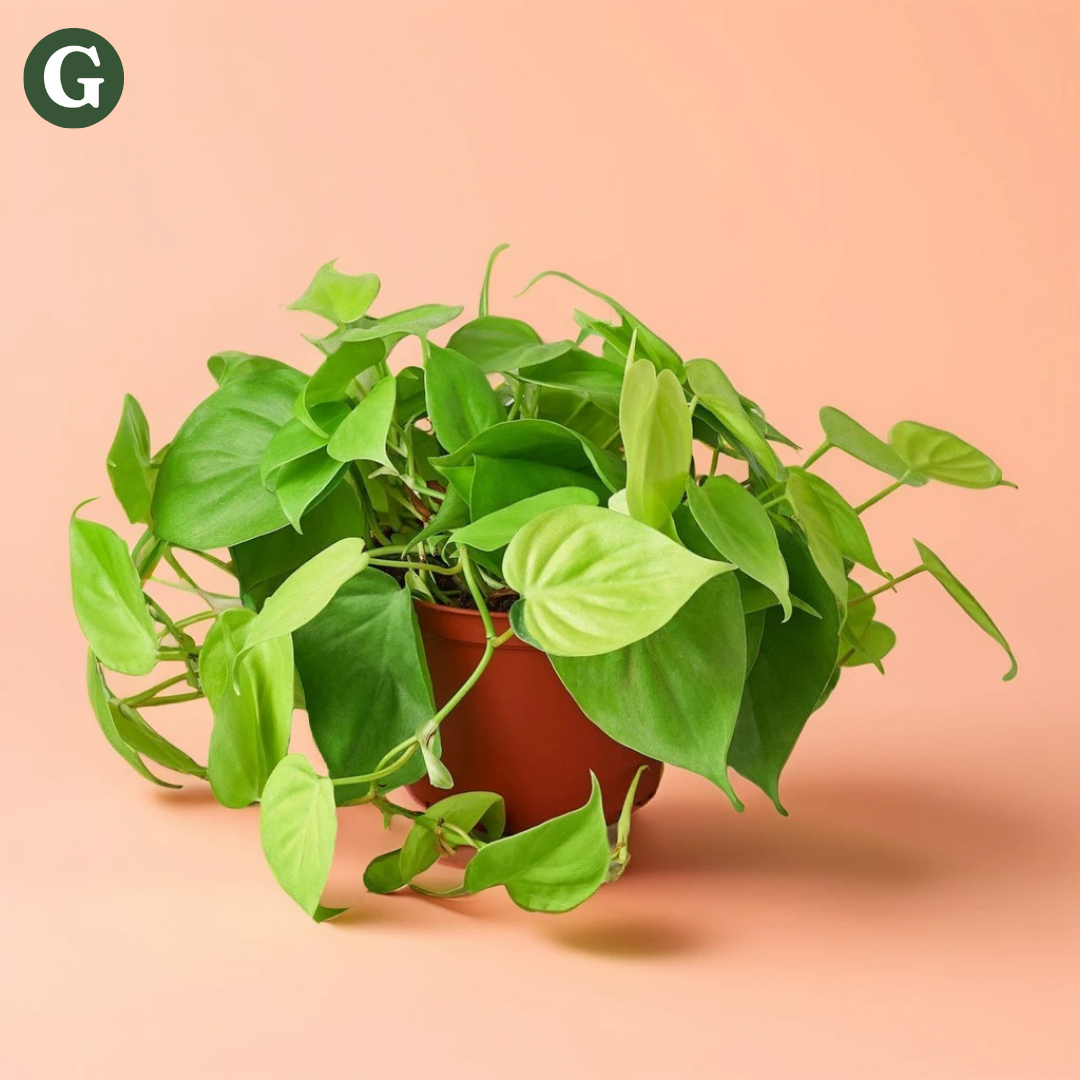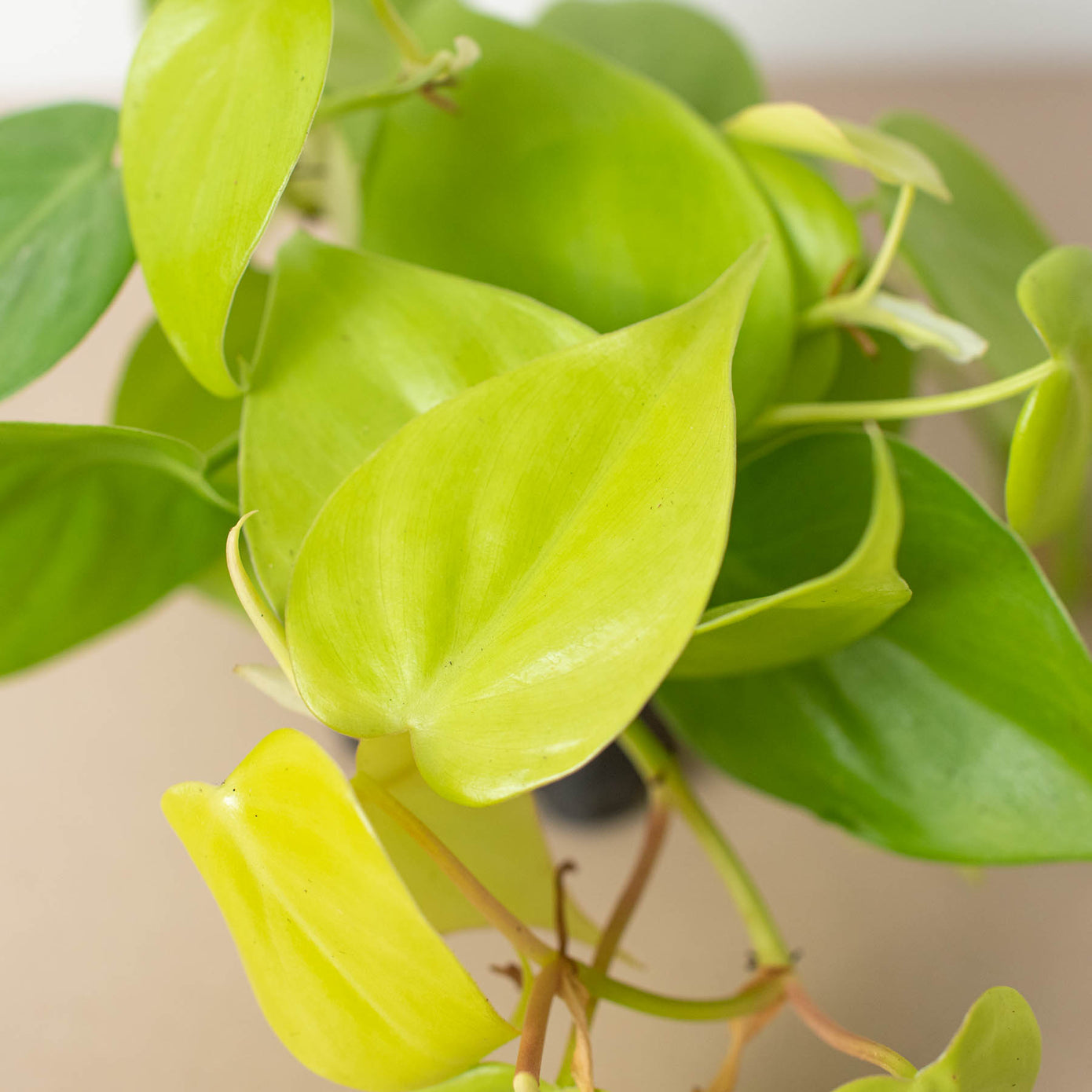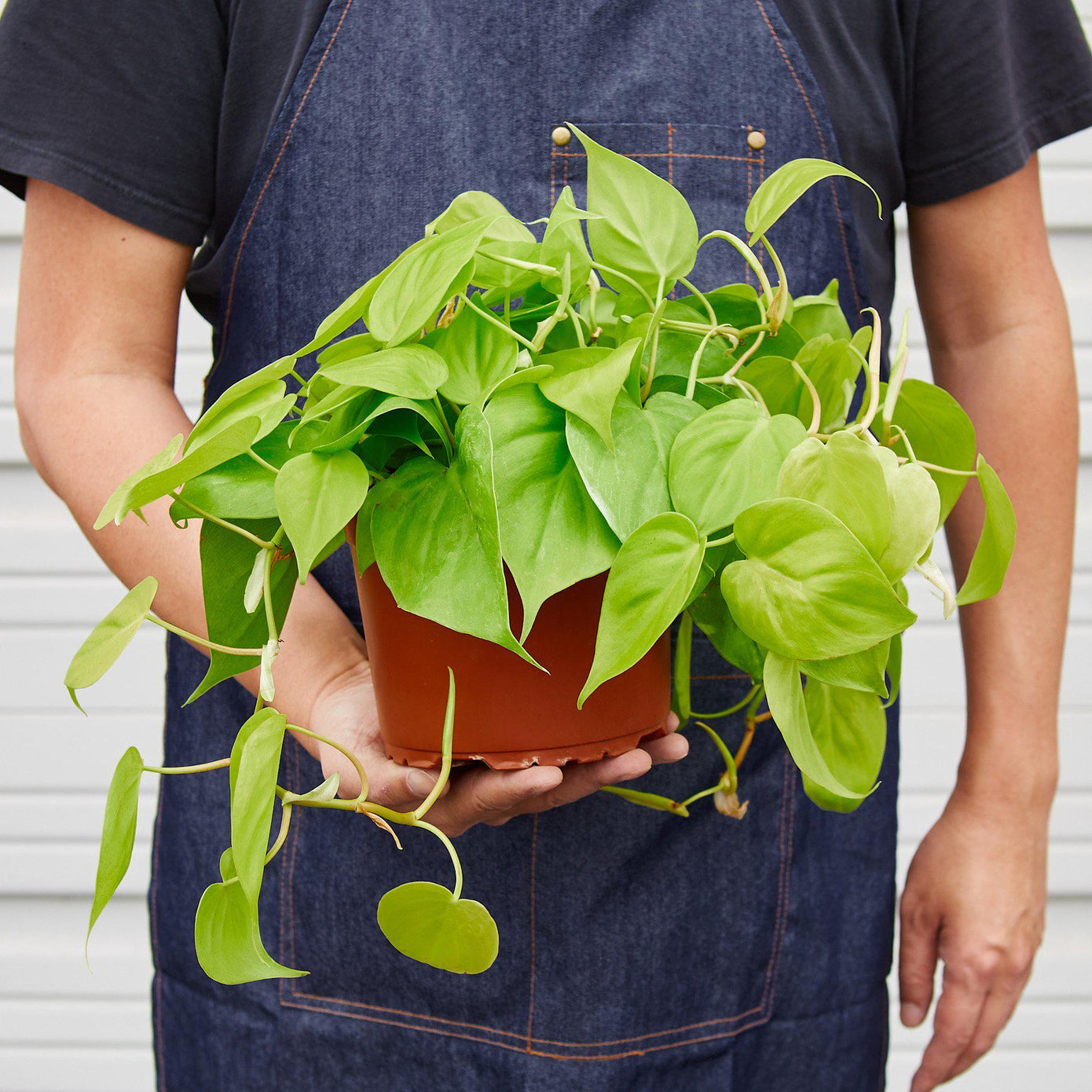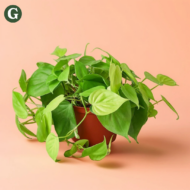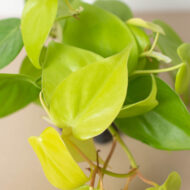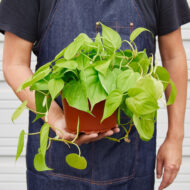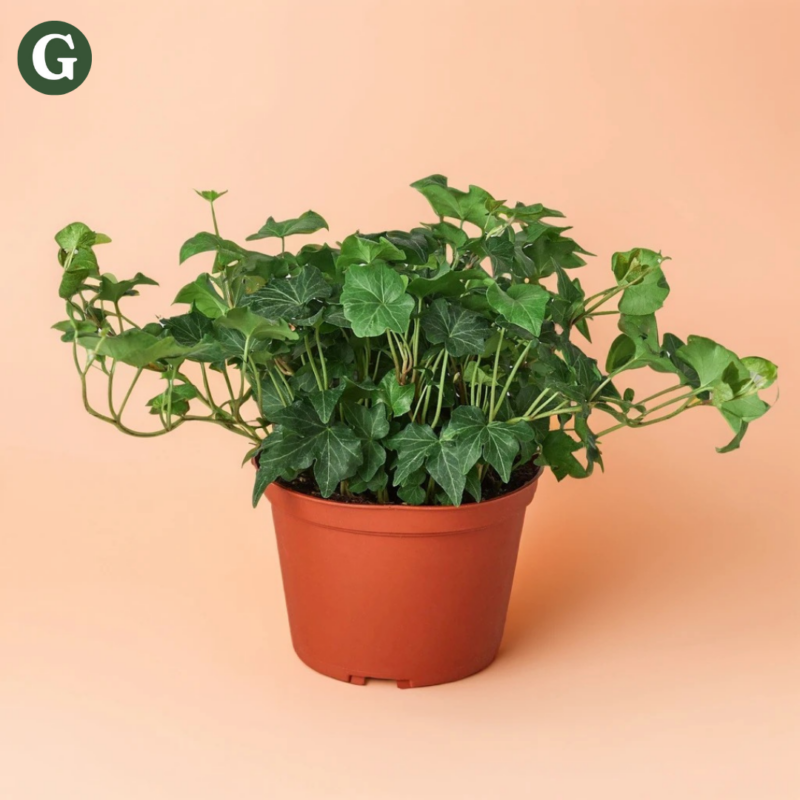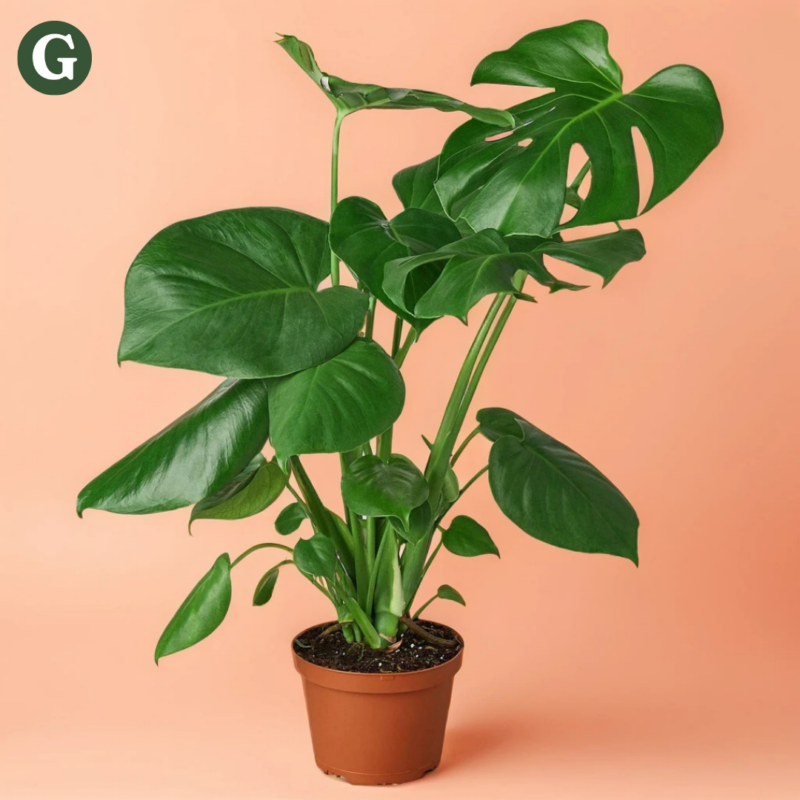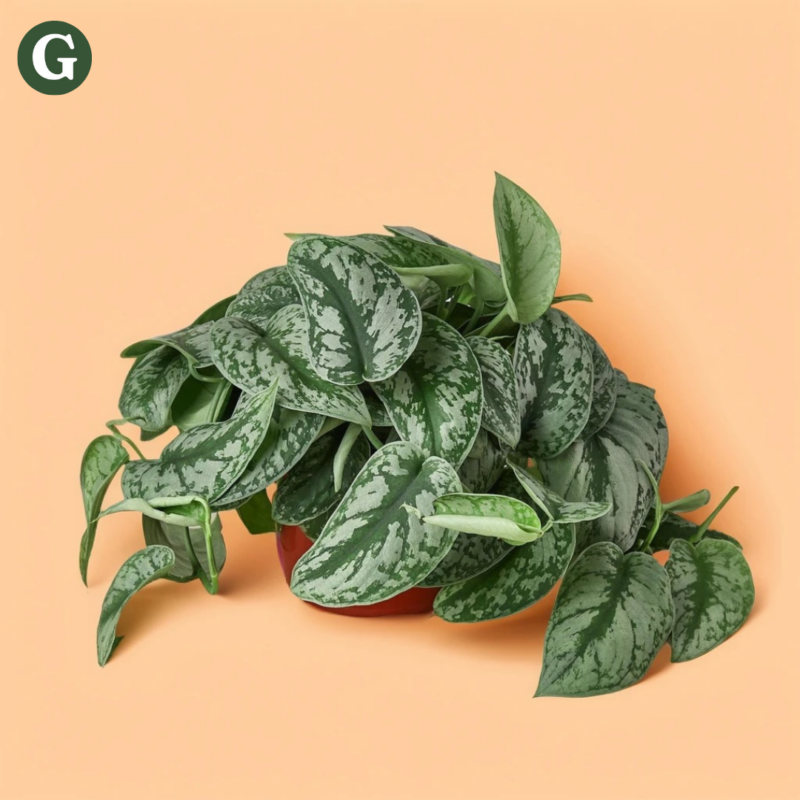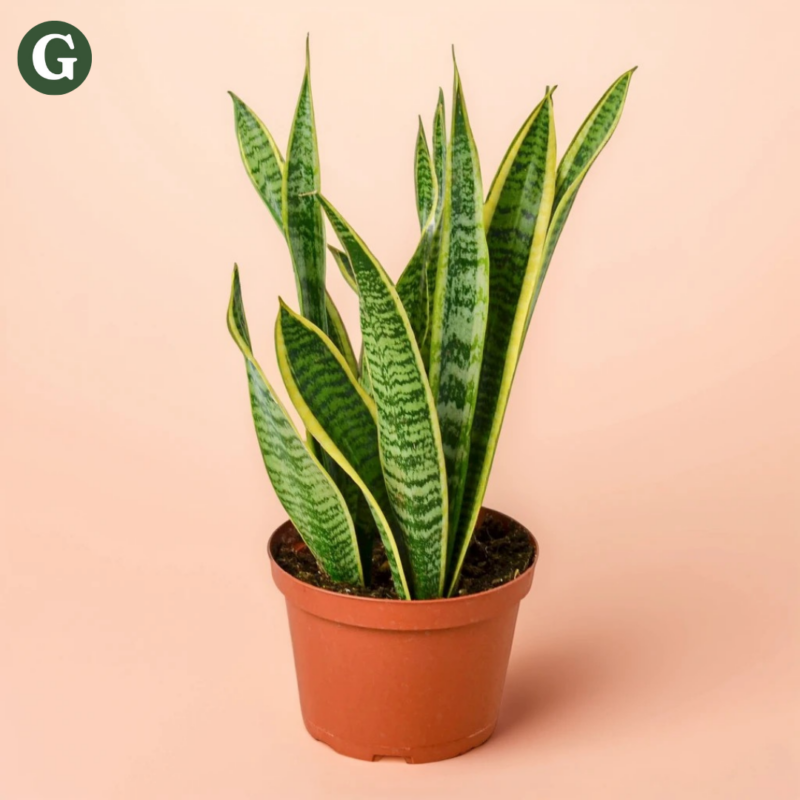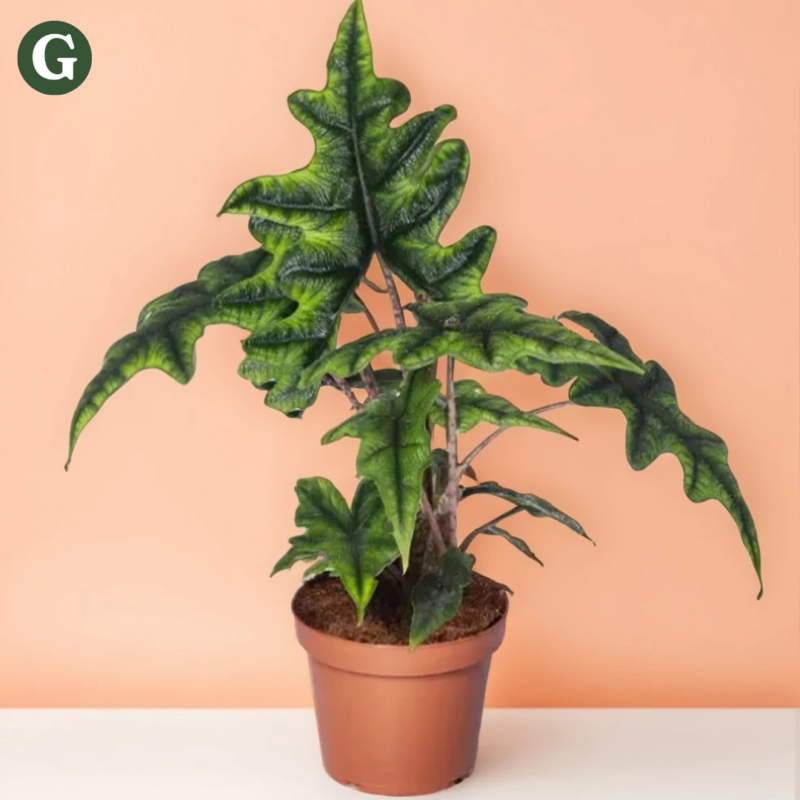Philodendron Cordatum Neon
Botanical Name: Philodendron Cordatum
Common Name(s): Neon Philodendron, Philodendron Neon Green
The Philodendron Neon is a vibrant, eye-catching variety of Philodendron known for its stunning, bright yellow-green foliage. The leaves of this plant are heart-shaped and glossy, making it a bold statement piece in any room. The plant's vivid neon green color adds a pop of brightness and energy to indoor spaces, and its lush, trailing vines make it ideal for hanging baskets, shelves, or as a climbing plant when given proper support. This low-maintenance plant is a favorite among both beginner and experienced plant enthusiasts due to its striking color and easy care requirements.
This Neon variety of Philodendron thrives in bright, indirect light, where its bright color will truly shine. It can tolerate moderate light but may lose some of its vibrancy in lower light conditions. As with other Philodendron varieties, it prefers well-draining soil and should be watered when the top 1–2 inches of soil feel dry. Be sure to avoid overwatering, as the plant is sensitive to root rot. It thrives in average room temperatures between 65–80°F (18–27°C) and benefits from moderate humidity, though it can tolerate a range of indoor conditions. To keep the plant happy, a little extra humidity, such as through misting or a humidity tray, can be helpful, especially in drier climates.
Air Purifying Qualities:
Toxin Removal: Like other Philodendron varieties, the Cordatum Neon is effective at filtering harmful indoor pollutants such as formaldehyde, benzene, and xylene, improving indoor air quality.
Oxygen Production: It helps improve the air quality by absorbing carbon dioxide and releasing oxygen.
Humidity Regulation: This Philodendron increases indoor humidity slightly through transpiration, which can be particularly beneficial in drier environments.
Note: This Philodendron is toxic to pets, including cats and dogs, if ingested. It contains calcium oxalate crystals, which can cause symptoms like vomiting, drooling, and oral irritation. Always keep this plant out of reach of curious pets to avoid potential health issues.
Care Insights & Expert Tips
- Fertilize regularly: Feed your plant with a balanced liquid fertilizer diluted to half strength every 4 weeks during the spring and summer season.
- Monitor for pests: Keep an eye out for common houseplant pests like mealybugs and spider mites. Treat infestations promptly with insecticidal soap or neem oil.
- Avoid Cold Drafts: This Philodendron prefers warm, consistent temperature. Avoid sudden reduced temperatures changes.
- Repotting: Repot every 1-2 years or when the plant becomes root-bound. Use a well-draining potting mix, such as peat-based or general houseplant mix, and select a pot that’s just 1-2 inches larger than the current one.
- Simplified Care Routine: This Philodendron is delicate and does not require overly complex care routines. Complications, such as overwatering and too much fertilizer, can affect the plant and stunt its growth.

Visit our plant care library
Find essential tips to keep your plants thriving, vibrant, and healthy.
